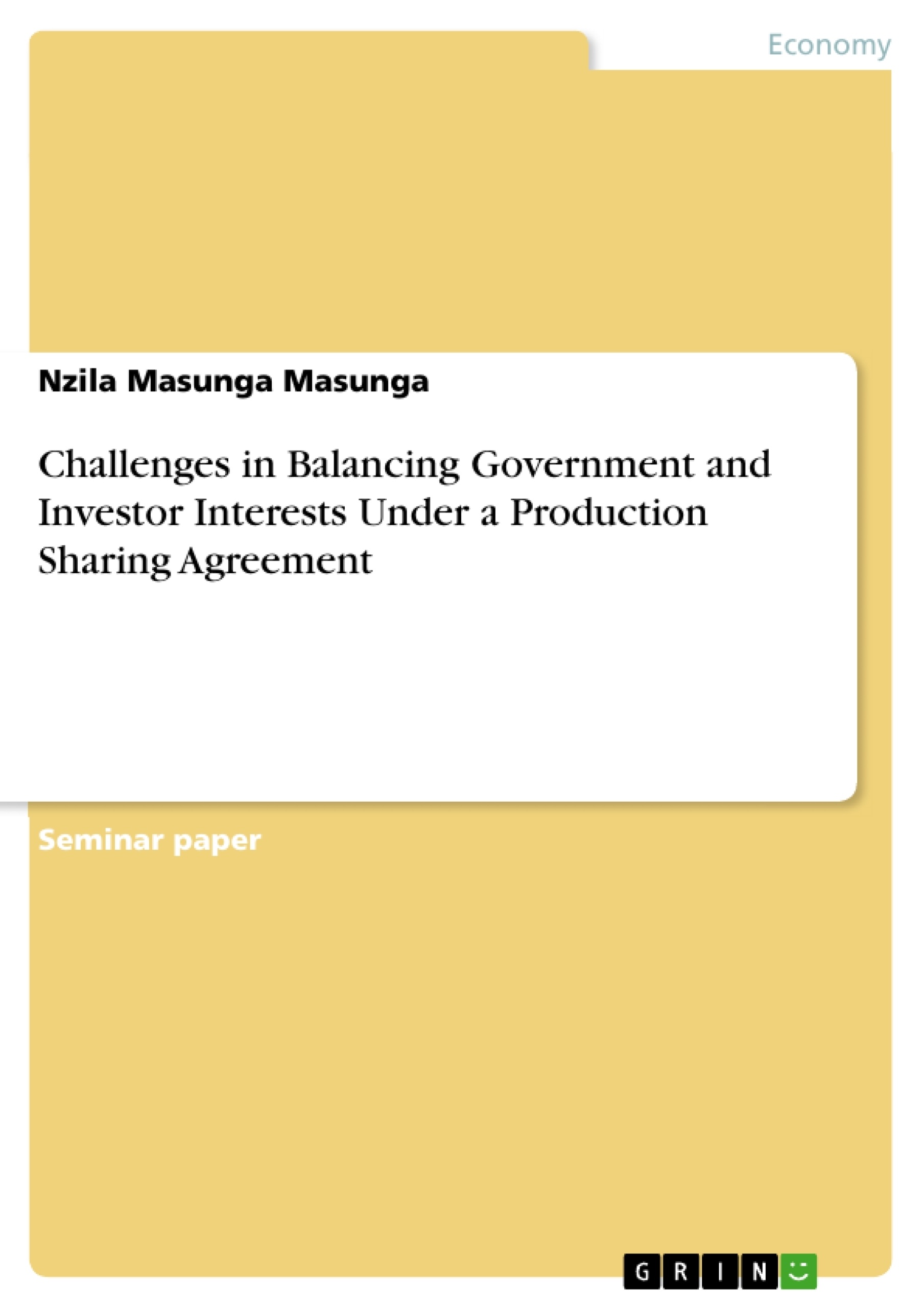This paper argues that, although the government is fully confident that there has been enough exploration success to justify higher government take and increase other socio-economic benefits under the new terms, there remain challenges towards encouraging foreign investment in petroleum exploration and development activities in the country.
A critical aspect of an oil and gas exploration and production agreement is balancing the interests of the state and investors. The broad objective of any resource rich government is to insure that it maximizes as much revenues as possible from its natural resource and insuring that there is always an appropriate level of investment in exploration and development activities in the country. The investors on the other hand are interested to maximize as much profit as possible by minimizing the costs, quick recovery of these costs and working with stable governments. In order to ensure a sustainable development of exploration and development activities in the country these varying state and investor’s interest has to be balanced.
Inhaltsverzeichnis (Table of Contents)
- BACKGROUND AND GENERAL INTRODUCTION
- PRODUCTION SHARING AGREEMENT IN CONTEXT
- State and Investors concerns
- The concept of PSA
- Key terms under PSA
- Key factors for consideration
- OVERVIEW OF TANZANIA PETROLEUM INDUSTRY
- Status of exploration activities
- Social-economic situation
- Politics
- Regulatory and institutional framework
- THE MODEL PRODUCTION SHARING AGREEMENT, 2013
- Exploration program and budget
- Signature bonuses and rental charges
- Royalty payment
- Cost recovery and production sharing
- Taxation
- No stabilization clause
- Government Participation
- Local content provision
- Employment, training and transfer of technology
- A CRITICAL ANALYSIS
- Challenges
- CONCLUSION
Zielsetzung und Themenschwerpunkte (Objectives and Key Themes)
This dissertation examines the challenges in balancing the interests of the state and investors under a Production Sharing Agreement (PSA), using the Tanzania Model PSA 2013 as a case study. The main objective is to analyze the effectiveness of the Tanzania model in achieving a balance between maximizing government revenue from natural resources and attracting sufficient investment in exploration and development activities.
- Balancing state and investor interests in oil and gas exploration and production.
- Analyzing the fiscal terms of the Tanzania Model PSA 2013.
- Examining the challenges in achieving a sustainable development of exploration and development activities in Tanzania.
- Assessing the effectiveness of the Tanzania Model PSA in attracting investment and maximizing government revenue.
- Exploring the impact of the PSA on the local economy and social development.
Zusammenfassung der Kapitel (Chapter Summaries)
The dissertation begins by introducing the concept of Production Sharing Agreements (PSAs) and highlighting the importance of balancing state and investor interests in this context. The first chapter discusses the key terms and factors that are considered in a PSA, including the exploration program, signature bonuses, royalty payments, cost recovery, taxation, and government participation. Chapter 3 provides an overview of the Tanzanian petroleum industry, discussing the status of exploration activities, the social-economic situation, the political landscape, and the regulatory and institutional framework. Chapter 4 focuses on the Tanzania Model PSA 2013, analyzing the specific terms and conditions of the agreement, such as the exploration program, signature bonuses, royalty payments, cost recovery, and taxation. The final chapter presents a critical analysis of the challenges in balancing the interests of the state and investors under the Tanzania Model PSA, considering factors such as the potential for conflict, the impact on local communities, and the need for transparency and accountability.
Schlüsselwörter (Keywords)
The dissertation focuses on the key terms and concepts of Production Sharing Agreements (PSAs), including balancing state and investor interests, fiscal terms, exploration and development activities, government revenue, investment, local content, sustainable development, and the Tanzania Model PSA 2013.
- Citation du texte
- Nzila Masunga Masunga (Auteur), 2014, Challenges in Balancing Government and Investor Interests Under a Production Sharing Agreement, Munich, GRIN Verlag, https://www.grin.com/document/369819



